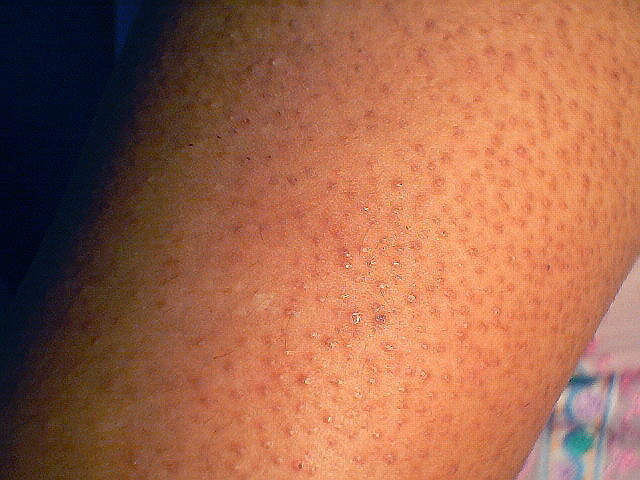 |
| Bruce Jenner after MOHS Surgery |
Learn about the different types of skin cancer so you can be an informed and objective reader and never be duped again.
Bruce Jenner DOES NOT have Melanoma. I repeat, Bruce Jenner does NOT have melanoma.
Now, I knew the Kardashians were a dramatic bunch... but apparently they managed to bring Bruce down with them. I just CAN'T with the misinformation, the misleading, the lying, the dramatics, and the sheer irresponsible behavior! This was all fun and games until they just straight up lied about skin cancer-- now you're messing with me and I am not cool with this. A melanoma diagnosis is a very serious thing and to falsely claim to have a melanoma is extremely irresponsible and insensitive.
Not all skin cancers are created equal, in fact, there are many different types of skin cancers that all look different and all have different consequences and prognoses. Not all skin cancers are melanomas and not all melanomas are malignant! Be informed and know what to look for!
The three most common forms of skin cancer are:
1. Basal Cell Carcinoma -- the most common cancer in humans and the most common skin cancer
1. Basal Cell Carcinoma -- the most common cancer in humans and the most common skin cancer
2. Squamous Cell Carcinoma -- rarely metastasize
3. Melanoma -- can metastasize and become very dangerous and fatal
Bruce Jenner was diagnosed with basal cell carcinoma and was essentially cured of it once he had a MOHS surgery. Basal cell carcinomas are actually the most common cancer of all in humans-- and they are NOT AT ALL related to the M-word.
So here's a little bit of information of each one of the NON- MELANOMA skin cancers I mentioned above. Let's start with the type of skin cancer Bruce Jenner had--
 |
| Basal Cell Carcinoma |
1. Basal Cell Carcinoma (BCCs)
- are NON-melanoma skin cancers that come from basal cells (small, round cells found in the lower layer of the epidermis)
- the prognosis is EXCELLENT
- they occur mostly on the face (especially the nose), scalp, neck and hands
- they are SLOW growing and can be present for several years before they even become problematic
- Patients will often say they have a slowly enlarging bump that will sometimes bleeds when rubbed-- in fact, some patients think its a pimple that just wont go away!
- The most common type of BCC looks like a small, pearly, dome-shaped bump
- There are many different ways to treat BCCs-- all with excellent prognoses. You can even put cream on them to treat them!
- Sometimes when a BCC is located on the face, scalp, hands, and shins the best treatment with the best cure rate is something called a Mohs surgery-- a special type of surgery that is performed by a Dermatologist with extra training
- BCCs are very superficial skin cancers that rarely ever metastasize and are not considered that dangerous-- they can just evade the surrounding skin and ulcerate if left untreated for a long period of time
- the second most common form of skin cancer
- they come from the uncontrolled growth of abnormal cells arising from the squamous cells which compose most the epidermis
- they rarely metastasize-- but can be locally invasive if left untreated
- they most commonly look like scaly red patches or bump-- and can even look like a wart!
- they are caused from cumulative UV exposure over many years-- but they can also arise in mucous membranes like the genitals and mouth
- they usually come from precancers called Actinic Keratoses (actinic means 'from the sun') which are just red, scaly, patches of sundamaged skin
- Just like BCCs, there are many different treatments available-- including Mohs, laser treatments, creams, and liquid nitrogen sprays
- All the treatments have an excellent prognosis
- Not all SCCs are slow growing-- some can just pop up out of nowhere and grow very rapidly-- but luckily these types are not as dangerous
If you ever do have a skin cancer you want it to be a basal cell carcinoma. Its the least dangerous of the bunch and the surgery Bruce Jenner had is the standard of care and has a 99% cure rate over 5 years. Basal cells can be hard to spot since they can look like a little pimple, an ant bite, or even an enlarged pore-- but in general, anything that just isn't going away or bleeds should be checked by a professional just to make sure. In fact, I just diagnosed a patient with a BCC after it took me about 5 minutes to convince him to let me take a biopsy because he was convinced it was only a cut from his razor!
Bruce Jenner is the boy who cried wolf-- and while I appreciate that he's helping with skin cancer awareness in general-- its still incredibly irresponsible and misleading to go around saying you have something as serious as a melanoma.
.jpg)



